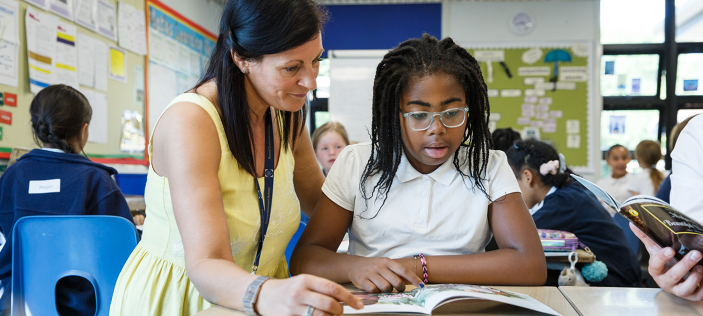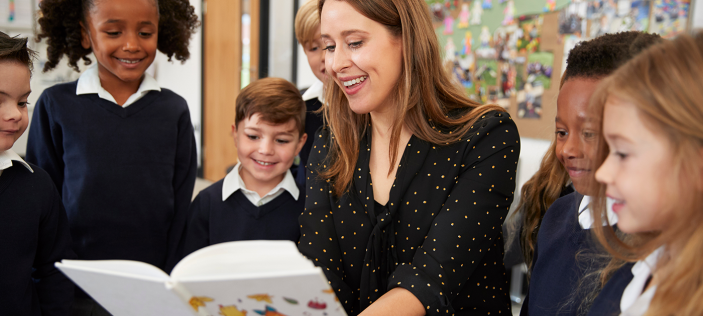
Thoughts occur when you are inspired. On this occasion, my inspiration came from a session that I attended, delivered by my colleague, Martin Galway, entitled 'What do we mean when we talk about reading (and writing) fluency?' This session was delivered at Oxford Reading Spree in October 2019, and these are the thoughts that it provoked.
During the session, Martin referred to the difference between ‘in the moment’ or automatic processing in reading, and processing that takes place after the event of actually ‘reading’ the text. I am paraphrasing and extrapolating from Martin’s exact words, so you may wish to refer to Martin’s original blog linked to the session for where his talk went from here.
Sometimes, depending on how the reading act has been framed, children read for a less-than-desirable purpose – usually because they have been told to read by a teacher and therefore they get on with it, without perhaps bringing much more than an attitude of ‘let’s get this business over and done with’ to the table. These children could also be classified as passive readers. These are the children, who when faced with the most hilarious/terrifying/interesting text, barely raise an eyebrow. They have figured out the real way to read (or at least they think they have) based upon the reading experiences that have been presented to them on numerous occasions. Having learnt the deal, they tackle a reading task as follows: they pseudo-read the text (the eyes may be on the page but the mind is probably somewhere else) before waiting for the inevitable questions that will follow the piece – these can be oral but are often written. At this point, they reluctantly drag their gaze back through the entire piece hunting for words or phrases that might match the question brief. To the passive reader, the text represents little more than a blob on the page. A first read may not begin to involve such processes as sematic inferencing, visualising, summarising, prediction etc, and as such the reader may lack a sure, or even partial, grasp of the text. If asked to share something of their understanding, some resort to re-reading the whole text again, from top to bottom whilst others may well pluck information from the text in the hope that it hits the mark.
It is easy to see how this passive form of reading could become habitual for the child who has repeatedly encountered the ‘reading followed by questions’ formula. It is also easy to see why teachers might go down this route. The ‘text then question’ formula does after all mimic the SATs reading test that children will face at the end of KS1 and 2. But, as reflective practitioners, we must become persistent in asking ourselves difficult questions; in this case, just because reading is tested in this way, does it mean that it should be taught in this way?
To clarify, I am aware that very few teachers would simply present children with a cold text, expect them to read it, and then present them with questions relating to the piece to answer, without adequate discussion. However, I would argue that even when post-reading discussion based on key questions takes place, we may still be reinforcing the notion that children can get away with a passive first read. When following this approach, the teacher is directly modelling a distorted reading behaviour; that is, reinforcing to the children that good readers read a text and then they think about it. I do believe that post-reading questioning is important, however, if we want to shunt passive readers towards becoming active readers, then we need to place greater emphasis on modelling the ‘in the moment’ reading behaviours that accompany an engaged reading experience, rather than focusing exclusively on modelling the post-reading behaviours that allow us to reflect back upon a text at a deeper level.
If we want to create active readers, then we need to remind ourselves of what they look like. Active readers can be a joy to behold, especially in child-form. Hopefully you will have all seen one in action. When reading silently, their heads are abuzz with sound. Internally, they are engaged in a meaningful expressive read of the text at hand. When they get to a funny bit, they laugh. When they get to a scary bit, they shiver. When they are perplexed, the eyebrow raises. When the teacher arrives at a cliff-hanger in the class read-aloud, they provide the obligatory doof…doof…doof (Eastender style). In adult form, they can be even more amusing – although it can be unsettling when you sit next to one on a train! Ultimately, we want all of our children to become active readers. Our mission should be to create whole carriages of train chortlers!
Hopefully we are agreed that this is what we want to achieve, but how?
Below you will find a list of my top tips aimed at moving passive readers, to active ‘in the moment’ readers.
Prepare them for reading
If you know that there is a funny/scary/interesting/disgusting bit in the text that you are about to read with the class, prepare them for it. For example,
‘When I first read this text, children, I burst out laughing at one bit. I wonder if you will do the same?’
Following the read, praise the children who reacted so they know that this is the right and proper way to engage with a text.
Re-brand silent reading
I dislike the term ‘silent reading’. I worry that it may inadvertently imply to a child that silence occurs both outside and inside the brain whilst reading. Instead, I prefer to use the term ‘busy brain reading’. When this term is established, you can start talking to the children about the busy brain activities that may be taking place inside their heads at the point of reading.
Modelling busy brain reading
It is not enough to model post-reading thinking. If we want to nurture active readers, we must nurture ‘in the moment’ reading. This could be as simple as reading the text to the children, and then returning to the beginning and re-reading, but this time pausing to share reading reactions as they occur. There will be far too many links/reactions/thoughts/strategies taking place in your head at any one point to warrant modelling them all. The challenge of teaching is knowing what your children can do, and what they cannot yet do. It is the latter that will inform the aspects of busy brain reading that you choose to model.
Prompt and provoke
Instead of simply listening to children reading, why not take the opportunity to listen to children think whilst reading. This is easily done. When working with a child one on one, or in a small group, invite them to read, but let them know that you will be interested in their thoughts as they read. Invite them to pause when they come across anything of interest/concern/alarm etc and tell you about it. In my experience, this really is a game-changing. Instantly, the children know that you expect more from them that simply barking at the text: instead, you expect them to both read and think at the same time – this is the goal of the active reader.
With these simple approaches, we may go some way towards nurturing engaged readers; children who read like nobody is watching!
If you are interested in considering further strategies for promoting active reading in the primary classroom, please join us at one of our KS2 Reading Fluency Project Roadshows, which will be taking place in various locations around this country this year.
Please visit the HFL Reading Fluency Project page for full details of forthcoming events.
If you are keen to host one of our events, please do get in touch at reading.fluency@hfleducation.org



